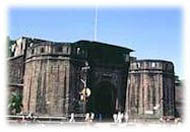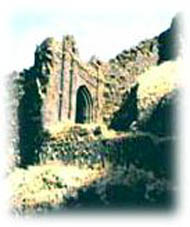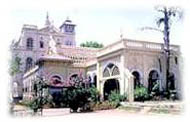Pune
|
Down the centuries, Pune has been ruled by several dynasties. The earliest evidence found (copper plates of 758 A. D. and of 768 A. D.) reveals that the Rashtrakootas ruled this region then. At that time, Pune was referred to as Punaka Vishaya and Punya Vishaya. Copper plates of 960 A. D. and 963 A. D. refer to it as Punaka Wadi and Punaka Desha. Here Vishaya means region. Later on, the city has been mentioned as Kasabe Pune.
|
|
The Pune Gazetteer explains the term Pune as Punya - a holy place. In Hindu tradition, a confluence (sangama) of two rivers is sacred. Hence, this city, where there is a confluence of two rivers, is Punyanagari. After the Rashtrakootas, Pune was ruled by the Yadava dynasty. After the fall of this dynasty, it came under Muslim dominance till the middle of the seventeenth century.
|
|
With the emergence of Chhatrapati Shivaji, who founded the Maratha empire, Pune became known to the Delhi Sultanate. Shivaji, spent his early childhood in Pune at Lal Mahal, a palace built by his father Shahaji, where Shivaji's mother Jijabai lived for a decade. Dadaji Konddev, Shivaji's mentor, developed Pune city. He constructed a temple of Ganesha called Kasba Ganapati. This is the grama devata where invitations for all religious functions are first offered be it for a marriage, upanayana ceremony or any other functions. It was in this Lal Mahal that Shivaji attacked the Moghuls and defeated Shahistekhan, the uncle of Aurangazeb
|

|
 |
After the death of Shivaji in 1680 and the cold blooded murder of his son Sambhaji, Aurangazeb named Pune as Muhiyabad. Pune gained importance during the period of the second Peshwa Thorala (senior) Bajirao who ruled from 1720 to 1740. During his time, the palace of the Peshwas - Shaniwarwada was built. The various mahals or buildings were constructed by different Peshwas. There are still remains of a fountain with thousand outlets called Hazari Karanje. It was Thorala Bajirao who expanded the Maratha empire into north and central provinces. Nanasaheb Peshwa succeeded Thorala Bajirao Peshwa and ruled the Maratha kingdom from 1740 to 1761. He tried to control the Nizam and maintained peace. He was instrumental in urbanising Pune city and
|
 |
encouraged the setting up of Peths or wards in Pune. He constructed the famous Parvati Temple complex, a pride of Pune city. He designed a water supply system from Katraj Lake that lies to the south of Pune city. A number of temples and palaces were constructed during his time.
|
|
Due to the family fueds that ensued thereafter, the Maratha power came to an end in 1818, when the British led by Mount Stuart Elphinstone defeated them and established the British Raj in this region. During this period, the French, the Portuguese and the British powers established contacts with the Peshwas, sent representatives for various functions. Pune and Delhi were the only centres of power during this century. Pune has been recognised as a seat of learning and the Deccan College (1851) led the educational movement in Pune. Tilak, Agarkar, Bhandarkar and other luminaries of the nineteenth century studied in the Deccan College. They studied in the English language, but a literary movement was started by organising the first Marathi literary conference in 1878. Justice Mahadev Govind Ranade, V. K. Chiplunkar and others took lead in this sphere of life. Tilak, Agarkar, Nam Joshi and Principal Apte founded the Deccan Education Society and its Fergusson College in 1885. The New English School (1880), the Nutan Marathi Vidyalaya (1883) and the MES Society's High School (1875) were started. Soon after, a high school for Indian girls was established in 1884. A new generation of educated Indians started the freedom movement under the leadership of Lokmanya Bal Gangadhar Tilak. He started two newspapers, the Mahratta in English (January 1, 1881) and the Kesri in Marathi (January 4, 1881). Through these newspapers, Tilak aroused interest in national education, national language, swadeshi and swarajyai - the four fold aims for independence. "Swaraj is my birthright" was the slogan given by Tilak to the rest of India.
|
|
Gopal Krishna Gokhale is another builder of modern India who established the Servants of India Society and represented Indian interests in the imperial legislative council. Mahatma Gandhi considered him his guru. Maharshi Dhondo Keshav Karve is yet another gem of modern India, who throughout his life fought for the upliftment of women, started a college for them and established the first Indian University for women, named SNDT Women's University. He was awarded the Bharat Ratna in 1958. Senior Wrangler R. P. Paranjape is another luminary from Pune who sacrificed higher salaries and worked as the principal of Fergusson College for over twenty years. Mahatma Jyotiba Phule started education for women and struggled hard for the upliftment of the depressed classes. Shrimati Anandibai Joshi was the first lady to complete medical education in the USA. Thus, we find the origin of various movements - social, religious, educational, political, economic and literary-, in Pune city.
|



